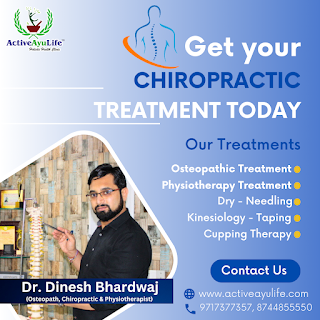How Non-Surgical Ways play a vital role to tackle higher back pain
Chronic back pain refers to persistent discomfort or pain in the lower, middle, or upper back that lasts for at least 12 weeks. It is a common and often debilitating condition that can significantly impact a person's quality of life. There are various potential causes of chronic back pain, including muscle or ligament strains, herniated discs, arthritis, spinal stenosis, and more.
Chronic back pain can result from a combination of factors,
such as aging, poor posture, obesity, or previous injuries. It may manifest as
a dull, aching pain, sharp or stabbing sensations, or even radiating pain down
the legs, depending on its underlying cause. Managing chronic back pain often
involves a multi-faceted approach, including physical therapy, pain medications,
lifestyle modifications, and in some cases, surgical interventions.
Individualized treatment plans and ongoing self-care
strategies, such as regular exercise, maintaining a healthy weight, and
practicing good ergonomics, can help individuals with chronic back pain lead
more comfortable and productive lives. Consultation with a Back
pain treatment Consultant is crucial for an accurate diagnosis and
appropriate management.
The ways
that help to get relief from long-term back pain:
Minimizing Risks: Surgery, especially on the spine,
carries inherent risks, including infection, bleeding, anesthesia
complications, and the potential for post-operative complications. Non-surgical
treatments provide a safer option for many patients.
Preserving Function: Surgery may involve the removal
of tissue or the fusion of spinal segments, which can lead to a loss of
mobility and function. Non-surgical treatments aim to manage pain and improve
function without these side effects.
Personalized Care: Chronic back pain can have various
causes, such as muscle strain, herniated discs, spinal stenosis, or
degenerative disc disease. Non-surgical treatments allow for a personalized
approach that addresses the specific cause of the pain.
Cost-Effectiveness: Non-surgical treatments are often
more cost-effective than surgery, considering the expenses associated with
hospital stays, surgical procedures, and post-operative care.
Conservative Approach: Many individuals prefer to
explore non-invasive options before resorting to surgery, as it is generally
considered a last resort when conservative treatments fail to provide relief.
RecoveryTime: Recovery from back surgery can be
lengthy and may require a significant period of restricted activity.
Non-surgical treatments often have shorter recovery times and less disruption
to daily life.
Avoiding Complications: Surgery can introduce
complications such as infection, nerve damage, or failure to alleviate pain.
Non-surgical treatments aim to avoid these potential complications.
Common non-surgical treatments for chronic back pain include
physical therapy, chiropractic
treatment, acupuncture, pain medications, anti-inflammatory drugs,
epidural steroid injections, nerve blocks, and lifestyle modifications. These
treatments focus on reducing pain, improving function, and enhancing the
patient's quality of life without the need for surgical intervention.
If you are looking for the Best Back pain treatment doctor in Delhi Who is Highly experienced in back pain treatments and who has developed a unique Holistic approach to ‘Align’ the whole body in one go. He was awarded the Best Clinician for Holistic Health in West Delhi & also received Appreciation and recognition for his treatment techniques at an International Conference held at AIIMS, Delhi.





Comments
Post a Comment